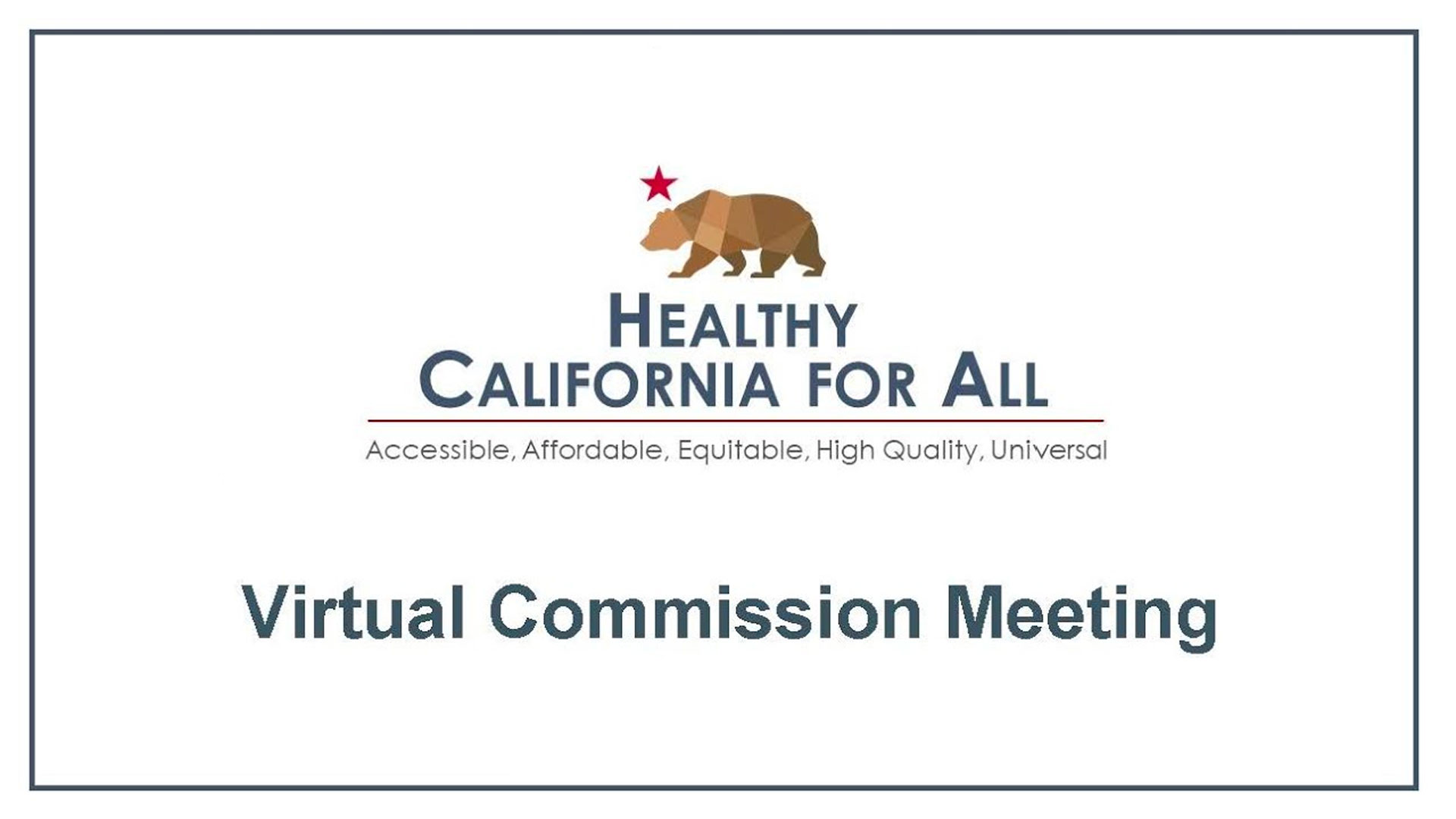At its November 17th meeting, the Healthy California for All Commission (HCAC) will consider “financial sustainability under unified financing.”
Below are talking points to help highlight key issues during public comment.
Sustainable financing of universal guaranteed healthcare in California requires lower costs, and elimination of regressive payments by workers and employers.
Current healthcare costs in California per the Commission’s analysis are $437 billion and will increase to $800 billion by 2031.
Single-payer financing can reduce the cost in 2031 by $237 billion.
Per CNBC, Average family premiums for employer-based health insurance have jumped 47% in the last decade, outpacing wage growth and inflation, November 11, 2021.
For those Commissioners who favor a market-based approach that feature health plans as intermediaries, consider this report from NPR: Medicare Advantage’s cost to taxpayers has soared in recent years, research finds, November 11. 2021.
According to the recent survey by the Kaiser Family Foundation (11/12/2021):
- Most covered workers make a contribution toward the cost of the premium for their coverage. On average, covered workers contribute 17% of the premium for single coverage and 28% of the premium for family coverage.
- In dollars, this amounts to $1,299 per worker for single coverage and $5,969 per worker for family coverage.
- Employers pay $6,440 for single coverage per worker; $16,253 for family coverage per worker.
- That’s for premiums only.
- In addition, workers must pay co-insurance and co-payments for in-network physician visits, outpatient surgery and hospitalizations.
- Those payments apply regardless of deductibles, with 85% of workers in a plan that requires the general annual deductible be met before the plan pays for services.
- The average deductible amount for single coverage is $1,669, similar to last year. The average deductible for covered workers is higher in small firms than large firms ($2,379 vs. $1,397).
- The average single coverage annual deductible among covered workers with a deductible has increased 13% over the last five years and 68% over the last ten years.
Per the Commission’s analysis (8/13/2021), “employer payments for health insurance are effectively a ‘head tax’ on the wages of workers, and are highly regressive,” since our current system of employer-based financing is not tied to ability to pay.
In short, the current system of healthcare financing is unsustainable, lacks equity and is too costly.
Sources of revenue and policy considerations (from HCN submission to Commission 9/2021):
Reexamine state budget priorities to increase state health dollars:
- Redirect funds from policing and incarceration into health care
- Redirect corporate tax subsidies into health care
- End provider tax breaks for community benefits and redirect those funds and other charity care funds into a single-payer system.
We should begin to identify potential revenue sources such as:
- Corporate taxes
- Gross receipts taxes
- Wealth taxes
- Progressive payroll taxes
- Non-profit provider fees
It is critical that a progressive unified financing proposal include a mandate that employers pass through savings in healthcare contributions on to their workers in the form of wage increases.
Per the UCSF literature review (1/2020) of financing studies that showed 19 out of 22 studies demonstrated savings from single-payer financing:
The literature review studied four types of cost savings. All plans included administrative savings but only some include the other three cost saving policies:
- Administrative savings (vary from 1.2% to 16.4% savings, median 8.8%)
- Lowered prices for drugs and medical equipment (included in 12 of 22 plans, savings range from .2% to 7.9%)
- Shift to Medicare payment rates (included in 8 of 22 plans, savings range from 1.4% to 10%)
- Reduced fraud and waste (included in 10 plans, savings range from .4% to 5%)
It’s up to the commission to design a plan to maximize cost savings.

